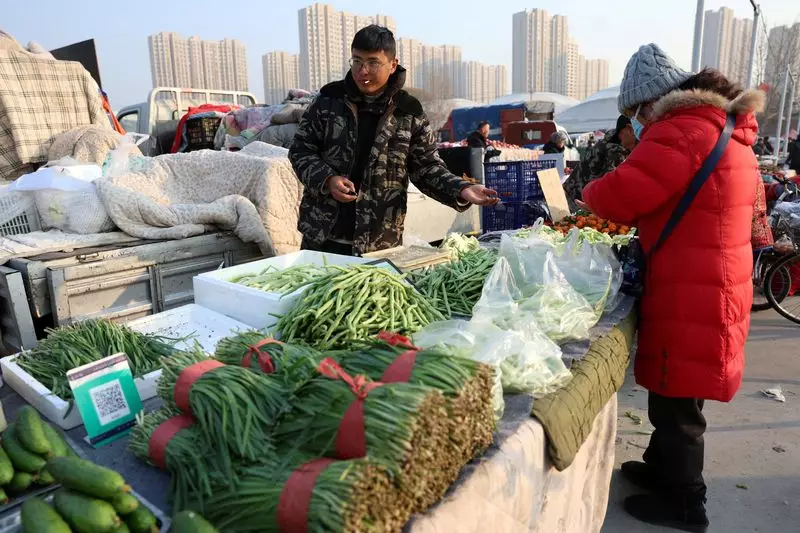October’s economic data from China reveals a landscape marked by stagnation and deepening deflationary pressures, raising serious questions about the effectiveness of the government’s stimulus initiatives. Despite the Chinese government stepping up its fiscal interventions, including a substantial 10 trillion yuan ($1.4 trillion) stimulus package to alleviate local government debt, expectations for rapid economic recovery seem overly optimistic. Instead of directly infusing the economy with liquidity as many investors hoped, this approach may fall short of addressing the underlying issues afflicting consumer demand and economic growth.
The latest figures from the National Bureau of Statistics indicate a consumer price index (CPI) increase of only 0.3% year-over-year in October, marking a slowdown from the 0.4% rise seen in September. This is the lowest inflation rate observed since June, significantly weaker than the 0.4% increase predicted by economists in a Reuters poll. The diminishing inflation reflects a broader trend of decline in consumer spending, a concern for a country where domestic consumption is increasingly seen as a pivotal driver of economic growth.
While the headline CPI figures paint a sobering picture, examining core inflation—which excludes food and energy prices—gives a slightly different perspective. Core inflation showed a marginal increase of 0.2%, up from 0.1% in September. This divergence may indicate fluctuations driven by external factors rather than robust domestic demand. Economists like Bruce Pang warn that the effects of recent stimulus measures may not yet be fully realized, particularly following the Golden Week holiday, which typically represents a period of increased consumer spending.
As the authorities grapple with this low inflation backdrop, they are presented with potential options for further monetary easing. The central bank’s recent aggressive monetary policies reflect an urgent need to spur economic activity, suggesting that additional interest rate cuts could be on the horizon. Nonetheless, the marginal improvement in core inflation does offer some breathing room for economic policymakers while they devise strategies to stimulate demand.
The struggle for significant economic rebound is further complicated by the precarious condition of China’s real estate market, which has been the pillar of economic growth in previous years. With a staggering 70% of household wealth tied to this sector, declining property values have instilled a sense of caution among consumers. This cautious spending behavior continues to stifle demand and puts additional pressure on the economy, manifesting in deflationary tendencies that resonate through various sectors.
Recent insights indicate that headline inflation in China may remain subdued in the coming year, with forecasts suggesting a mere 0.8% increase in consumer prices. Similarly, producers continue to grapple with price declines, as evidenced by a 2.9% year-over-year decrease in producer prices in October. This marks deepening deflation, particularly in industries such as petroleum and natural gas extraction, and highlights the scale of the challenges facing manufacturers amidst stagnant market conditions.
Looking ahead, some analysts propose that the Chinese government’s willingness to retain certain fiscal resources suggests a more strategic approach, possibly anticipating shifts in the global economy, such as the possible return of Donald Trump as U.S. president. As geopolitical factors and global economic conditions evolve, China’s economic stance may require recalibrating to adapt to new realities.
China’s current economic indicators are a cause for concern, illustrating a broader narrative of slow growth, deflationary pressures, and a complex interplay between domestic policies and global conditions. As the authorities pursue measures to stimulate growth, the tangible effects on consumer behavior and market dynamics remain to be seen. The road to recovery may be long and fraught with challenges as China navigates a path amidst tightening economic conditions.


Leave a Reply